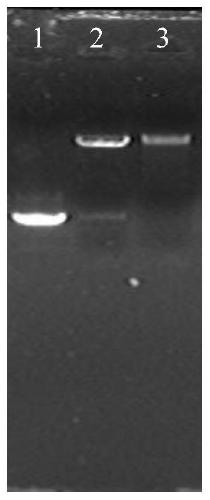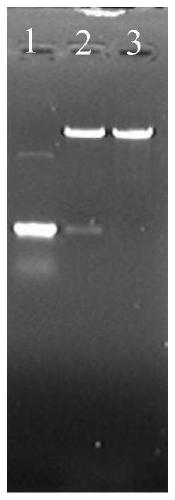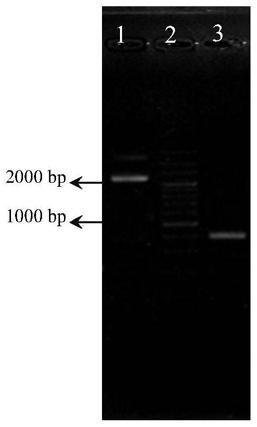A mannitol-producing Leuconostoc intestinalis mutant strain and its application method
A technology of Leuconostoc enterococcus and mutant strains, applied in the field of bacteria, can solve the problem of insufficient mannitol production rate
- Summary
- Abstract
- Description
- Claims
- Application Information
AI Technical Summary
Problems solved by technology
Method used
Image
Examples
Embodiment 1
[0029] To construct a mutant strain of Leuconostoc enterococcus with dextran sucrase, D-lactate dehydrogenase and acetaldehyde dehydrogenase gene knockout, the specific steps are as follows:
[0030] In the first step, Leuconostoc enteritidis Δdtsl (CCTCC M2013724) was used as the starting bacterium to construct a mutant strain of Leuconostoc enteritidis with knockout of dextran sucrase and D-lactate dehydrogenase genes:
[0031] (1.1) Cloning of the partial sequence of the D-lactate dehydrogenase gene of Leuconostoc enterolis:
[0032] Using chromosomal DNA as a template, the Leuconostoc mesenteroidesΔdtsl (Leuconostoc mesenteroidesΔdtsl) strain with a coding sequence length of 996bp was cloned, and the preservation date was December 29, 2013. CCTCC) preservation, the preservation number is the partial continuous sequence of D-lactate dehydrogenase gene of CCTCC M2013724), and the specific operation steps are:
[0033] (1.1.1) The preservation number is the extraction of tot...
Embodiment 2
[0078] Leuconostoc mesenteroides ΔdtslΔD-ldhΔaldh (Leuconostoc mesenteroidesΔdtslΔD-ldhΔaldh) strain, which was preserved in the China Center for Type Culture Collection (CCTCC), the preservation date is November 14, 2016, and the preservation number is CCTCC M2016638), that is, the present invention The specific steps for the fermentation application of a mannitol-producing Leuconostoc enterica mutant strain are as follows:
[0079] Leuconostoc mesenteroides Δdts1ΔD-ldhΔaldh (Leuconostoc mesenteroidesΔdtslΔD-ldhΔaldh) in a 250ml Erlenmeyer flask, which will be preserved in the China Center for Type Culture Collection (CCTCC) with the preservation date of November 14, 2016, and the preservation number is CCTCC M2016638 The bacterial strain is transferred to MRS medium at 1% by weight, and cultivated at 30°C for 20 hours on a shaker with a rotation speed of 120 rpm. The concentration of mannitol can reach 9.35 g / L, and the conversion rate of fructose in sucrose 93.5%.
[0080]...
PUM
 Login to View More
Login to View More Abstract
Description
Claims
Application Information
 Login to View More
Login to View More - R&D
- Intellectual Property
- Life Sciences
- Materials
- Tech Scout
- Unparalleled Data Quality
- Higher Quality Content
- 60% Fewer Hallucinations
Browse by: Latest US Patents, China's latest patents, Technical Efficacy Thesaurus, Application Domain, Technology Topic, Popular Technical Reports.
© 2025 PatSnap. All rights reserved.Legal|Privacy policy|Modern Slavery Act Transparency Statement|Sitemap|About US| Contact US: help@patsnap.com



